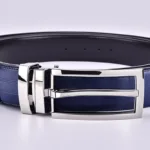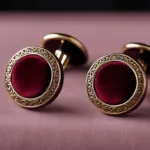As an aficionado of classic style, protecting pinstripe suits from moths is a task that demands your attention. Despite their diminutive size, moths can wreak havoc on your esteemed wardrobe. But fret not, for essential care for moth prevention in pinstripe suits can be both simple and effective. With the right preventive measures, you can safeguard the sharp lines and elegant patterns of your suit from those pesky invaders.
Enlist a combination of grooming, cleaning, and attentive storage to fortify your prized pinstripe against the nibbling larvae. Your suit is a reflection of your taste and style; let’s ensure it remains impeccably preserved. Follow along as we unravel expert strategies to keep your sartorial investments intact and free from unexpected guests.
Understanding Moth Damage in Pinstripe Suits

When it comes to preserving the timeless elegance of pinstripe suits, it is crucial to recognize and combat the threats posed by clothes moths. These pests are particularly fond of the fine animal fabrics, such as wool, that are commonly used in premium suits. The visible signs of moth damage in pinstripe suits are not only unsightly; they can render a once-dapper garment unwearable. Let us delve into the types of moths that may be feasting on your wardrobe and understand their lifecycle to better protect your apparel investments.
Identify the Enemy: Case-Making vs. Webbing Clothes Moths
There are two primary culprits responsible for damage to your suits: case-bearing clothes moths and common clothes moths. Both species thrive in dark, undisturbed environments where they can feed uninterrupted. The case-bearing moth is known for leaving behind a tubular case, a telltale sign of its presence. On the other hand, webbing clothes moths tend to spin silken webs in areas where they feed, often seen as irregular lines or patches on affected fabrics.
The Lifecycle of a Moth: From Larvae to Adulthood
Understanding the lifecycle of a moth is key to preventing damage. The lifecycle begins with the laying of eggs by adult moths, which then hatch into the real fabric-devouring culprits: the larvae. These larvae consume keratin—a protein found in animal fibers such as wool—during their growth stage, which is when they cause the most harm. Spotting tiny holes, loosened threads, or even bare spots on your suits can indicate that moth larvae have been or are active.
Why Pinstripe Suits Are at Risk
Pinstripe suits, with their sharp lines and professional appeal, are often made from luxurious wools that are particularly susceptible to moth damage. The well-defined weave of a pinstripe pattern can be ruined by just a few missing threads, a risk that elevates the necessity for vigorous moth prevention efforts. Take heed of the integrity of your beloved suits and implement defensive measures against these stealthy insects to ensure your wardrobe remains impeccable.
Storing Pinstripe Suits to Prevent Moth Damage

When it comes to storing pinstripe suits to prevent moth damage, precision is key. Moths can wreak havoc on your quality suits if given a chance. It’s essential to adopt effective moth-proofing tips for pinstripe suits to maintain the integrity of your wardrobe. Below, find guidance on how to shield your suits using air-tight garment bags for suits and additional measures to keep the pests at bay.
- Store suits in air-tight plastic bags or containers, as they provide a formidable barrier against moths.
- For added prevention, ensure all potential openings, such as hanger holes, are taped securely.
- Consider using vacuum-sealed or compressing bags not only to save space but to enhance protection levels.
- Maintain a routine check to ensure the integrity of the storage measures, replacing any worn-out materials or seals.
If your suits are stored long-term, especially during seasons when they are not in use, the following table provides a quick reference for optimal storage techniques:
| Storage Solution | Benefits | Considerations |
|---|---|---|
| Air-Tight Plastic Bags | Impermeable barrier against pests | Check regularly for any tears or openings |
| Compressing Bags | Space-efficient and adds layer of protection | Ensure suits aren’t compressed for too long, to prevent fabric damage |
| Cedar Blocks or Balls | Repels moths naturally | Requires periodic replacement to maintain efficacy |
Natural Moth Repellents for Pinstripe Suits

If you cherish your pinstripe suits, it’s crucial to protect them from the ravages of moths. Natural moth repellents offer sustainable solutions that are easy to implement. Let’s explore how items like cedar and lavender can serve as your first line of defense against these persistent pests.
Using Cedar and Lavender as Organic Deterrents
When it comes to natural methods, effective cedar as a moth repellent stands out. Cedar’s natural oils have been utilized for years to thwart moth larvae from ruining garments. Another fragrant ally is lavender. Not only does it provide a pleasant scent for your wardrobe, but benefits of lavender sacks include acting as a repellent that keeps adult moths at bay. Incorporating these repellents into your closet does more than just protect; it also imparts a refreshing aroma to your suits.
The Benefits of Herbal Repellents
Herbal repellents are not just about fragrance; they also provide a safe way to protect your prized pinstripe suits without resorting to chemicals. The utility of these natural wonders is in the peace of mind they afford to those who prefer eco-friendly alternatives.
DIY Solutions for Moth Prevention
Moth prevention doesn’t have to be costly or complicated. DIY solutions can be just as effective when implemented correctly. Consider crafting your own sachets filled with cedar chips or dried lavender to place in your suit pockets or drawers – a simple yet potent strategy to ensure the longevity of your suits.
- Cedar blocks and balls can be refreshed with sandpaper to restore their scent and effectiveness.
- Lavender sacks easily made at home or purchased can be tucked into suit pockets for lasting freshness and protection.
- Regularly replace or rejuvenate your natural repellents to maintain their deterrent strength.
Here’s a comparative look at cedar and lavender, emphasizing why they are preferred natural moth repellents:
| Cedar | Lavender |
|---|---|
| Kills moth larvae on contact | Strong aroma deters adult moths |
| Scent diminishes over time but can be revived | Safe to use without any toxic effects |
| Does not kill eggs or adult moths | Effectiveness as a repellent declines over time, needing replacement |
When it comes to safeguarding your natural moth repellents for pinstripe suits, embrace cedar and lavender. Not only do they preserve the integrity of your clothing, but they also incorporate natural elements into the heart of your wardrobe.
Pinstripe Suit Moth Prevention During Off-Seasons

When the season changes, and you swap out your wardrobe, long-term moth prevention strategies become critical for your pinstripe suits. By incorporating seasonal storage advice and understanding the best practices for protecting suits in off-seasons, you can maintain your garments in exceptional condition year-round. Preemptive care and appropriate storage solutions are your allies in combatting moth damage during these times of infrequent use.
Before packing away your pinstripe suits, it’s imperative to have them professionally dry-cleaned. This process eliminates any traces of moth eggs or larvae and strips away body oils and residue that can attract pests. Once your suits are cleaned and prepped, choosing the right type of storage container will ensure they remain safeguarded until needed again.
- Sealed plastic tubs are ideal for winter sweaters, offering a moisture-free environment that moths find inhospitable.
- For pinstripe suits, specialized garment bags made from cotton or other non-damaging materials offer breathable protection, keeping the fabrics in pristine condition.
Owning a pinstripe suit is an investment in your professional or formal attire. Heed these storage tips and prevent the despair of finding your cherished suit has become a moth’s next meal. By being proactive, you ensure your pinstripe stays immaculate, season after season.
Protecting Pinstripe Suits from Moths Through Regular Cleaning
When it comes to maintaining the pristine condition of your pinstripe suits, essential care for moth prevention is paramount. An effective schedule of regular suit maintenance ensures that these enemies of fine attire are held at bay. Incorporate these maintenance strategies into your routine to keep your suits impeccable and moth-free.
The Role of Dry Cleaning in Moth Proofing
Dry cleaning does more than just cleanse; it’s a critical component in the battle against moths. Dry cleaning to kill moths is not a myth; this process is lethal to the various stages of their life cycle present in your suits, including those pesky larvae and hidden eggs.
| Dry Cleaning Benefits | At-Home Care |
|---|---|
| Eliminates larvae and eggs | Regular vacuuming of closets and drawers |
| Professional grade solvents used | Spot cleaning spills and stains promptly |
| Pressing and detailing preserve fabric | Brushing out the suit to remove hair and fibers |
| Expert inspections for early signs of moth damage | Ensuring suit pockets are emptied and cleaned |
Importance of Spot Cleaning and Brushing Out
Beyond the dry cleaner’s prowess, take matters into your own hands with diligent spot cleaning and brushing. This not only keeps your suit looking sharp for the next wear but also removes any moth attractants like food particles or skin cells, which could otherwise be a feast for these destructive pests.
- Spot cleaning: Address spills as soon as they occur to prevent residues that attract moths.
- Brushing: Use a suit brush after each wear to dislodge any lurking eggs or larvae and prevent fabric matting.
Maintaining the integrity of your pinstripe suits involves more than just hang it back in the closet after a day’s wear. It’s a continuous process of care, combining professional dry cleaning and thorough at-home practices. By embracing these efforts, you extend the life and appearance of your suits while establishing an unwelcoming environment for moths.
Moth-Proofing Tips for Pinstripe Suits
Preserving the immaculate condition of your pinstripe suits involves more than just occasional wear and tear checks. It requires a dedicated approach to cleaning and storage practices to deter moths, an understanding of DIY solutions for moth prevention, and applying essential care for moth prevention. A routine check for any damage or larvae can save your suit before minor nibbles turn into unsightly holes. But vigilance alone isn’t enough – integrating preventive steps is key to avoiding the costly damage inflicted by moths.
Your home cleaning regimen can also play a pivotal role in keeping pests at bay. Moths are repulsed by certain substances that you can use in your regular cleanup – think of vinegar. Its acidic nature and potent smell create an uninviting environment for moths, safeguarding not only your suits but your entire wardrobe. Including vinegar in your cleaning routine does more than keep surfaces shiny; it acts as a sentinel against garment-loving pests.
Ultimately, integrating thorough care with innovative DIY solutions for moth prevention in your regular maintenance of suits can greatly enhance their longevity. Employing consistent cleaning and storage practices to deter moths will help ensure that your pinstripe suits remain a staple in your wardrobe, free of damage and ready for any occasion. Remember, it’s the small daily actions you take that culminate in lasting protection for those items you value most.























